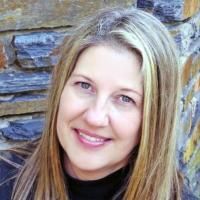Genomic and functional variation of human centromeres.
Date
2020-04
Authors
Journal Title
Journal ISSN
Volume Title
Repository Usage Stats
views
downloads
Citation Stats
Abstract
Centromeres are central to chromosome segregation and genome stability, and thus their molecular foundations are important for understanding their function and the ways in which they go awry. Human centromeres typically form at large megabase-sized arrays of alpha satellite DNA for which there is little genomic understanding due to its repetitive nature. Consequently, it has been difficult to achieve genome assemblies at centromeres using traditional next generation sequencing approaches, so that centromeres represent gaps in the current human genome assembly. The role of alpha satellite DNA has been debated since centromeres can form, albeit rarely, on non-alpha satellite DNA. Conversely, the simple presence of alpha satellite DNA is not sufficient for centromere function since chromosomes with multiple alpha satellite arrays only exhibit a single location of centromere assembly. Here, we discuss the organization of human centromeres as well as genomic and functional variation in human centromere location, and current understanding of the genomic and epigenetic mechanisms that underlie centromere flexibility in humans.
Type
Department
Description
Provenance
Citation
Permalink
Published Version (Please cite this version)
Publication Info
Sullivan, Lori L, and Beth A Sullivan (2020). Genomic and functional variation of human centromeres. Experimental cell research, 389(2). p. 111896. 10.1016/j.yexcr.2020.111896 Retrieved from https://hdl.handle.net/10161/24766.
This is constructed from limited available data and may be imprecise. To cite this article, please review & use the official citation provided by the journal.
Collections
Scholars@Duke

Beth Ann Sullivan
Research in the Sullivan Lab is focused on chromosome organization, with a specific emphasis on the genomics and epigenetics of the chromosomal locus called the centromere. The centromere is a specialized chromosomal site involved in chromosome architecture and movement, and when defective, is linked to cancer, birth defects, and infertility. The lab has described a unique type of chromatin (CEN chromatin) that forms exclusively at the centromere by replacement of core histone H3 by the centromeric histone variant CENP-A. Their studies also explore the composition of CEN chromatin and its relationship to the underlying highly repetitive alpha satellite DNA at the centromere. The Sullivan lab also discovered that genomic variation within alpha satellite DNA affects where the centromere is built and how well it functions. The Sullivan lab was part of the Telomere-to-Telomere T2T Consortium that used ultra long read sequencing and optical mapping to completely assemble each human chromosome, including through millions of basepairs of alpha satellite DNA at each centromere. Dr. Sullivan's group also builds human artificial chromosomes (HACs), using them as tools to test components required for a viable, transmissible chromosome and to study centromeric transcription and chromosome stability. The lab also studies formation and fate of chromosome abnormalities associated with birth defects, reproductive abnormalities, and cancer. Specifically, they study chromosomal abnormalities with two centromeres, called dicentric chromosomes. Originally described by Nobelist Barbara McClintock in the 1930s, dicentrics in most organisms are considered inherently unstable chromosomes because they trigger genome instability. However, dicentric chromosomes in humans are very stable and are often transmitted through multiple generations of a family. Using several approaches to experimentally reproduce dicentric chromosomes in human cells, the lab explores mechanisms of dicentric formation and their long-term fate.
Unless otherwise indicated, scholarly articles published by Duke faculty members are made available here with a CC-BY-NC (Creative Commons Attribution Non-Commercial) license, as enabled by the Duke Open Access Policy. If you wish to use the materials in ways not already permitted under CC-BY-NC, please consult the copyright owner. Other materials are made available here through the author’s grant of a non-exclusive license to make their work openly accessible.
